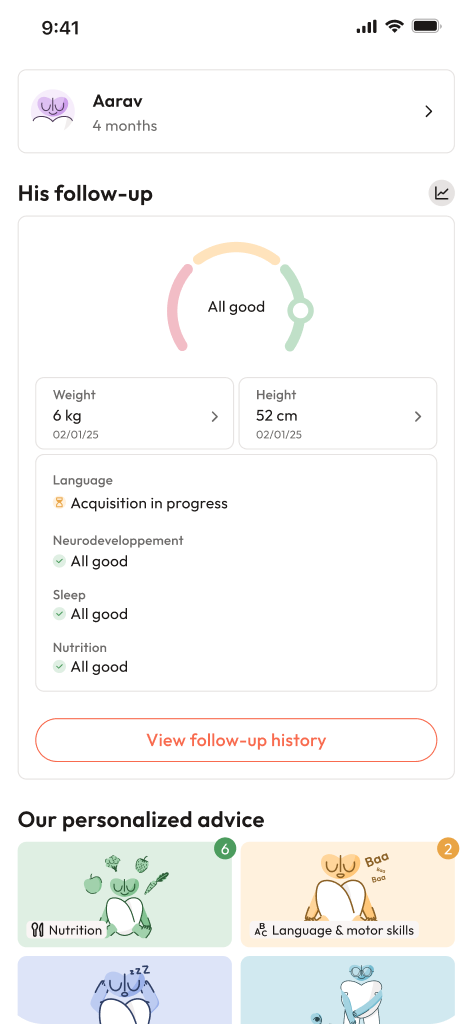Expecting a baby comes with excitement, hope — and, let’s admit it, a ripple of worries that loves to sneak in, especially when confronted with medical words like nuchal translucency. You may be sifting through search results, pausing at unfamiliar terms, wondering: Is this scan really necessary? Will a number decide my baby’s fate? Breathe. Questions are normal. The journey ahead, filled with screening decisions and numbers in millimetres, sometimes feels daunting. Parents often want not just textbook definitions but reassurance, medical clarity and thoughtful guidance. What exactly does a nuchal translucency scan show? When is the right time for this ultrasound? How to react if the NT value edges above the so-called “normal”? Here’s a detailed, science-backed overview with empathy riding shotgun: what is measured, how it matters in early pregnancy assessment, what results may (or may not) indicate, plus which next steps to consider with confidence — and a bit of calm.
Nuchal translucency: early window into your baby’s well-being
What is measured and why does it matter?
Imagine this: during the first trimester, a pocket of clear fluid just under the skin at your baby’s neck — the nuchal translucency — comes into focus on ultrasound, usually between 11 and 14 weeks. This isn’t just another number. Sonographers, with trained precision, measure the maximum thickness of this fluid-filled space behind the fetal neck. A certain degree of fluid is normal as the baby develops — it’s part of the intricate dance of lymphatics, veins, and connective tissue. However, when that NT value tilts higher, especially beyond 3.5 mm, it may raise a statistical “flag” for conditions like Down syndrome (trisomy 21), chromosomal abnormalities, structural heart defects, or some rare genetic syndromes. Important note: nuchal translucency is a screening tool — not a diagnosis. NT helps adjust the perceived probability for certain conditions and guides whether any follow-up, like genetic testing, could be helpful.
Nuchal translucency, nuchal fold, cystic hygroma: demystifying the dictionary
It’s easy to feel lost with words thrown about in the scan room. Here’s a cheat sheet:
- Nuchal translucency (NT): Clear, fluid-filled region measured at the back of your baby’s neck during the first trimester (11 to 13 weeks, 6 days).
- Nuchal fold: Measured in the second trimester — this isn’t fluid but rather a thickness of soft tissue.
- Cystic hygroma: Much larger, sometimes septated and found in the same area, this signals very different (often more critical) underlying conditions — think of problems with lymphatics or chromosomal changes.
When should you plan your nuchal translucency scan?
Choosing the right time: a matter of millimetres and days
Timing is everything. The nuchal translucency scan works best when your baby measures between 45 and 84 mm from crown to rump, fitting typically between 11 and 13+6 weeks. Go earlier, and the structures are just too tiny for precision; too late, and anatomy starts evolving fast, making the reference charts less meaningful. Precise dating with crown-rump length (CRL) is vital before you even interpret an NT number.
What to expect: normal numbers and practical thresholds
- NT about 1.4 to 1.6 mm: This is most common at 11–12 weeks. Feels reassuring? It should.
- NT at 2.5 mm: Slightly up, might bring recommendations for extra (noninvasive) tests. Think of it as the slow doorbell ring, not a loud alarm.
- NT at 3.5 mm or above: Now, this tends to prompt discussions about deeper evaluation — perhaps fetal echocardiography, or diagnostic procedures.
Rather than fixate on a millimetre, remember: NT results are combined with gestational age, maternal age, and sometimes specific blood markers for a fuller adjusted risk.
How is the nuchal translucency scan performed?
Step-by-step: experience inside the scan room
Bring along previous scan results, wear comfortable clothes, and relax — the NT scan, lasting about 15–30 minutes, is generally safe and painless. Usually, the scan happens abdominally, but sometimes a transvaginal approach helps if the image isn’t clear. A detailed, mid-sagittal (side-profile) view is needed. The baby’s posture should be just right: neither curled up nor stretched out. The sonographer might ask you to shift a bit or even walk for a minute to get the best image.
Precision and quality: how is accuracy maintained?
Everything from the angle of the ultrasound probe to fetal position can impact measurements. Sonographers use electronic calipers to record the inner borders of the translucent zone at its thickest point, repeating the measurement several times to ensure consistency. International protocols (like those from the Fetal Medicine Foundation) recommend storing images, ensuring consistent quality, and routine audit of results — this isn’t just local best-practice, it’s science-backed policy.
If images are unclear, a repeat scan or referral to a more specialised fetal medicine centre may be offered. Sometimes, technical factors such as maternal body structure, fetal posture, or fibroids can make measurements tricky — honest communication with your care team matters.
Understanding your nuchal translucency report
Interpreting values: millimetres, MoM, and what’s behind the numbers
NT results often appear as a measurement in millimetres, sometimes also expressed as MoM (multiples of the median — this standardises NT for your baby’s exact size). An MoM close to 1 means your baby’s NT aligns with what’s typical for their development; a higher MoM nudges risk estimates upward. The report may also give numbers like 1 in 450 (chance of a specific condition) or a category (e.g., “intermediate risk”).
The key: numbers aren’t the last word. Parent’s age, blood tests, and nuances in scan quality all combine in a risk calculation. If your risk sits above 1 in 250, diagnostic tests are usually offered; between 1 in 250 and 1 in 1000, noninvasive tests like NIPT might be suggested; below 1 in 1000, standard follow-up is usually enough — unless you prefer further reassurance.
Beyond nuchal translucency: combined screening and other strategies
NT plus maternal blood tests: how risks are refined
Nuchal translucency shines brightest when paired with blood markers — usually PAPP-A and free beta-hCG — plus maternal age and additional information. For Down syndrome screening, the combination boosts sensitivity to about 85%, with a modest 5% chance for a false positive. Noninvasive prenatal testing (NIPT) goes further for common trisomies but remember, every screening test, no matter how advanced, still carries slim chances for both missed or false alarms.
What if nuchal translucency is increased? Exploring medical explanations
An increased NT draws attention because of its strong associations:
- Chromosomal aneuploidies (Down syndrome, trisomy 18, trisomy 13): The most well-known link.
- Congenital heart defects: This is why doctors often advise a detailed heart scan, or fetal echocardiography, if NT is worryingly high.
- Syndromes like Noonan (when NT is markedly high or paired with other unusual findings).
- Cystic hygroma, fetal hydrops (general fluid build-up) — occasionally, even certain infections such as cytomegalovirus (CMV) or parvovirus B19 may play a part.
Interestingly, a sizeable group of babies with elevated NT will have no identified problem later; that’s why approaches remain stepwise and measured.
Next steps after a raised nuchal translucency: options and support
Choice of tests: sequencing risk, support, and calm
Higher NT value? Not a verdict. Instead, this serves as an invitation: further noninvasive tests (NIPT, cfDNA), or perhaps diagnostic options like chorionic villus sampling (CVS) from 10 weeks or amniocentesis after 15 weeks. Each test brings a unique timeline, level of detail, and small inherent risks (miscarriage risk from these procedures now sits at just fractions of a percent).
Individual situations differ: some parents favour certainty even if that means an invasive test; others lean towards incremental, noninvasive reassurance. Detailed ultrasound, heart imaging for the baby, perhaps repeat scans — all come together as the next steps. If chromosomes seem fine but worries linger, targeted gene panels or exome sequencing may be discussed, especially for unusual findings or family history clues.
Monitoring and following up: what happens after the scan?
High NT is often followed by more ultrasounds (sometimes serial, to see if findings resolve or evolve) and specific heart checks. Monitoring might include looking for fluid build-up (hydrops), growth assessment, or anatomical surveys. If testing offers reassurance but the NT remains a concern, extra conversations may happen regarding rare genetic syndromes — pausing, reflecting, and then deciding together with your care team.
Nuchal translucency and other screening methods
How does NT compare with NIPT or second-trimester testing?
While NIPT outperforms NT alone when looking for major trisomies, the nuchal translucency scan stands out for its ability to spot certain heart problems and subtle anatomical issues earlier. Second-trimester blood screens add insight into neural tube defects. When used together, these screens complement — rather than compete with — each other, offering a more complete picture.
Value of NT scan in modern clinical pathways
Despite newer technologies, NT holds a special place for early structural checks and as a guide for future decisions, be it scheduling a detailed heart scan or planning advanced genetic counselling.
Special and technical considerations in nuchal translucency screening
Twins, multiples, and assisted pregnancies: how situations adapt
With twins or higher-order multiples, each fetus gets its own NT and CRL checked. Interpretation gets more nuanced — especially with monochorionic twins sharing a placenta, so a fetal medicine specialist often steps in for detailed guidance. Assisted reproduction pregnancies need extra attention for timing and placental arrangements. Finally, sometimes the scan just can’t get a clear angle — a repeat appointment or an alternative screening may be suggested, a normal part of the process.
Factors that can influence the result
The mother’s body type, orientation of the uterus, fibroids, baby’s exact posture — these all can muddy the waters. Well-trained ultrasound teams manage these challenges with standard technique and frequent quality checks. If an NT result surprises or feels at odds with expectations, never hesitate to request a careful review or even a redo.
How risk is calculated and explained
Your provider takes baseline maternal age-related risk, adjusts with the baby’s NT (as MoM and likelihood ratios), considers blood markers, and finally blends all this into an individual number or category. Reports should clearly show the NT, CRL, gestational age, MoM (if available), and the risk advice — all in one place.
Additional first-trimester ultrasound markers to be aware of
Alongside NT, certain findings (like absent nasal bone, abnormal heart blood flow, obvious swelling, or a small umbilical hernia) may boost suspicion for particular genetic or anatomical conditions. The more these clues appear in combination, the more your doctors may discuss advanced genetic or imaging evaluations.
Ensuring reliability: quality and standards in NT screening
Consistency is the backbone here: written measurement protocols, use of international criteria, MoM conversion, service-wide quality audits, image storage, and ongoing training. Accurate pregnancy dating matters for NT interpretation — differences of just a few days can swing the numbers.
Preparing for the appointment and understanding your NT report
What to bring, ask, and check before your scan
- All prior scan or dating information — every detail helps for precision.
- Ask if they’ll take blood for PAPP-A and free beta-hCG that day.
- Dress for comfort, as the scan might be abdominal or, rarely, transvaginal.
- If costs matter, clarify with the centre and your insurance — and check what’s available under government or private care plans.
- List your own questions beforehand: about training, protocol, or follow-up paths.
Reading and making sense of the NT report
You’ll usually see the nuchal translucency measurement, CRL, gestational age, and either a probability (like “1 in 300”) or a risk label (low, intermediate, high). If the next steps are outlined (counselling, cfDNA, repeated imaging, fetal echocardiography, diagnostic tests), make sure you’re clear on what’s recommended and why — and never hesitate to ask your doctor to go through the details once more.
Emotional support: coping with uncertainty and decisions
The time between scan and results can be heavy. Try setting a limit to online searching, embrace small comforts (music, calls, a walk), and keep communication honest with your partner or family. Medical staff are there to present all options and support values and choices — not to push towards any one route. When lost, try asking:
- What does this specific result mean for my baby?
- What are our options and timelines if we need a definite answer?
- Based on our priorities, what would you personally recommend and why?
Visuals that help parents understand NT
Sometimes, illustrations and transparently labelled ultrasound images — showing the exact nuchal translucency zone, gestational age, CRL, and clear arrows or lines — can make explanations click. Parent-friendly diagrams and simple flowcharts (from NT measurement, through risk calculation, to choices like NIPT or diagnostic testing) support better decisions and less confusion.
References and expert sources
- Fetal Medicine Foundation: Protocols and quality standards for NT measurement
- Snijders et al., Lancet 1998: Landmark research on early NT screening
- Salomon et al., 2009: Widely used reference charts for clinical NT values
- Latest publications on cfDNA/NIPT screening and heart checks after increased NT
Key Takeaways
- Nuchal translucency is a first-trimester screening marker that adjusts risk but does not provide a definitive answer.
- The 11–14 week scan window combined with skilled technique underpins reliable measurements — and the right timing is essential.
- Both the raw millimetre value and MoM convey the same story from different angles — together, they shape a risk-based approach.
- A calm, staged plan exists: screening, diagnostic testing if necessary, focused imaging, and supportive follow-up where desired.
- Reliable sonographers, transparent communication, and a stepwise approach all build parental confidence.
- For tailored guidance, accurate health trackers, and free child health questionnaires, you can try the application Heloa.
Questions Parents Ask
How long will I need to wait for my nuchal translucency result and any further tests?
Usually the measured nuchal translucency value is given at the end of the scan or within a day or two; the official written report can take a few more days. If blood tests are also combined, expect about 5–7 days, possibly longer if sent to external labs. Moving on to NIPT? Most results take 5–14 working days. Diagnostic tests like CVS might produce rapid answers in a few days for certain chromosomal findings, but detailed genetic results can stretch to several weeks. Always feel free to ask for updated timelines — it helps to manage expectations.
How much does nuchal translucency screening cost and is it covered?
Costs can be highly variable, based on healthcare system and whether performed privately or under government schemes. Often, medically indicated nuchal translucency scans and basic follow-up are included in public services, while private providers charge separately. Advanced tests (NIPT, CVS, amniocentesis) usually carry additional costs. Always request an upfront estimate and check your insurance’s policy, especially if cost is a concern.
How is “nuchal translucency” pronounced?
Say: NOO-kul trans-LOO-sen-see. If unsure, ask your sonographer or doctor to repeat it — medical staff are accustomed to clarifying such terms and are happy to do so.

Further reading:
- Nuchal translucency — Knowledge Hub: https://www.genomicseducation.hee.nhs.uk/genotes/knowledge-hub/nuchal-translucency/
- First Trimester Screening, Nuchal Translucency and NIPT: https://www.hopkinsmedicine.org/health/treatment-tests-and-therapies/first-trimester-screening-nuchal-translucency-and-nipt
- Nuchal translucency measurement: https://www.mayoclinic.org/nuchal-translucency-measurement/img-20007028









